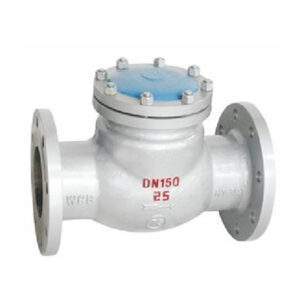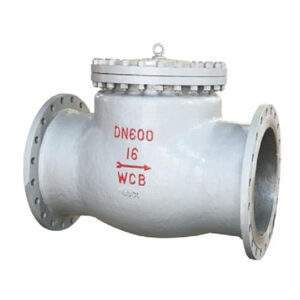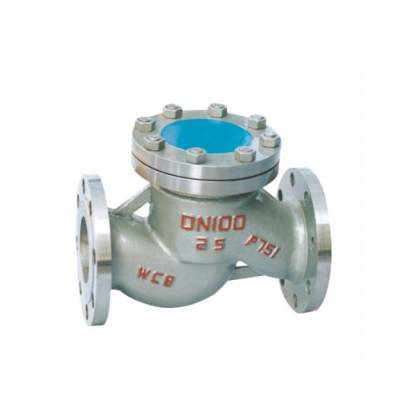Introduction

Check valves, also known as one-way valves or non-return valves, are essential components in various fluid handling systems. Their primary check valve purpose is to allow fluid flow in only one direction, preventing backflow and protecting equipment from potential damage. This seemingly simple function plays a crucial role in maintaining system efficiency, safety, and reliability across a wide range of industries. This blog post will delve into the diverse applications of check valves and explore the crucial check valve purpose they serve in different sectors.
Core Check Valve Purpose: Preventing Backflow and Protecting Equipment
The most fundamental check valve purpose is undoubtedly the prevention of backflow. Backflow can occur due to various reasons, such as pump failure, pressure fluctuations, or gravity. If unchecked, backflow can lead to several undesirable consequences, including:
- Contamination of fluids: In industries like food processing and pharmaceuticals, backflow can lead to the contamination of sterile or purified fluids, jeopardizing product quality and safety.
- Damage to equipment: Backflow can cause damage to pumps, compressors, and other sensitive equipment, leading to costly repairs and downtime.
- System inefficiency: Backflow can reduce system efficiency by forcing the system to re-process fluids that have already been treated or processed.
Check valves effectively eliminate these risks by automatically closing when the flow reverses, ensuring unidirectional flow and safeguarding the integrity of the system.
Detailed Explanation of Check Valve Purpose in Preventing Backflow
Different types of check valves exist, each with its own mechanism for preventing backflow. Some common types include:
- Swing check valves: These valves use a hinged disc that swings open to allow forward flow and closes against a seat to prevent backflow.
- Lift check valves: These valves use a disc that lifts off its seat to allow forward flow and falls back onto the seat to prevent backflow.
- Ball check valves: These valves use a ball that rolls out of the flow path to allow forward flow and rolls back into the flow path to prevent backflow.
- Duckbill check valves: These valves use a flexible, duckbill-shaped elastomer that opens to allow forward flow and closes to prevent backflow.
The choice of check valve depends on factors such as fluid type, pressure, temperature, and specific application requirements. Regardless of the type, the core check valve purpose remains the same: preventing backflow and protecting the system.
Industry-Specific Check Valve Purpose: Diverse Applications

The versatility of check valves is evident in their widespread use across numerous industries. Here are some key examples:
- Water and Wastewater Treatment: In water treatment plants, check valves prevent backflow of treated water into untreated water sources. In wastewater treatment, they prevent backflow of wastewater into clean water systems. This check valve purpose is crucial for public health and environmental protection.
- Oil and Gas: In the oil and gas industry, check valves are used in pipelines, refineries, and offshore platforms to control the flow of crude oil, natural gas, and other hydrocarbons. They prevent backflow during pipeline maintenance or equipment failures, ensuring safe and efficient operations.
- Chemical Processing: In chemical plants, check valves are used to handle a wide range of corrosive and hazardous chemicals. They prevent backflow that could lead to dangerous reactions or contamination. The check valve purpose here is critical for safety and environmental protection.
- HVAC Systems: In heating, ventilation, and air conditioning (HVAC) systems, check valves are used to control the flow of refrigerants and other fluids. They prevent backflow that could reduce system efficiency or damage equipment.
- Power Generation: In power plants, check valves are used in steam and water lines to prevent backflow and protect turbines and boilers.
- Medical and Pharmaceutical: Check valves are used in medical devices and pharmaceutical manufacturing to ensure unidirectional flow of fluids and prevent contamination. The check valve purpose in these applications is paramount for patient safety and product quality.
- Automotive and Aerospace: In automotive and aerospace applications, check valves are used in fuel systems, oil systems, and hydraulic systems to control fluid flow and prevent backflow.
Examples of Specific Check Valve Purpose within Industries
- Food Processing: In food processing, check valves prevent backflow of cleaning solutions into food processing lines, maintaining hygiene and preventing contamination.
- Pharmaceutical Manufacturing: In pharmaceutical manufacturing, check valves ensure unidirectional flow of sterile fluids during drug production, preventing contamination and ensuring product quality.
Illustrating Check Valve Purpose Across Industries
The following table further illustrates the diverse applications and check valve purpose across various industries:
| Industry | Application | Check Valve Purpose |
|---|---|---|
| Water Treatment | Preventing backflow of treated water into untreated water sources | Maintaining water purity and preventing contamination. |
| Oil and Gas | Controlling flow in pipelines, refineries, and offshore platforms | Preventing backflow during maintenance or failures, ensuring safe and efficient operations. |
| Chemical Processing | Handling corrosive and hazardous chemicals | Preventing backflow that could lead to dangerous reactions or contamination, ensuring safety and environmental protection. |
| HVAC | Controlling flow of refrigerants and other fluids | Preventing backflow that could reduce system efficiency or damage equipment. |
| Power Generation | Controlling flow in steam and water lines | Preventing backflow and protecting turbines and boilers. |
| Medical and Pharmaceutical | Ensuring unidirectional flow of sterile fluids | Preventing contamination and ensuring patient safety and product quality. |
| Automotive and Aerospace | Controlling fluid flow in fuel, oil, and hydraulic systems | Preventing backflow and ensuring proper system function. |
| Food Processing | Preventing backflow of cleaning solutions into food processing lines | Maintaining hygiene and preventing contamination of food products. |
| Pharmaceutical Manufacturing | Ensuring unidirectional flow of sterile fluids during drug production | Preventing contamination and ensuring product quality in pharmaceutical manufacturing. |
Maintaining System Integrity: Further Aspects of Check Valve Purpose
Beyond preventing backflow, check valves also contribute to system integrity in other ways:
- Preventing Water Hammer: Water hammer, a pressure surge caused by sudden changes in flow velocity, can damage pipelines and equipment. Check valves can help mitigate water hammer by preventing the sudden reversal of flow.
- Maintaining System Pressure: Check valves help maintain system pressure by preventing backflow, ensuring that the system operates at the desired pressure.
The Importance of Proper Check Valve Selection for Achieving the Check Valve Purpose

Selecting the right check valve for a specific application is crucial for achieving the desired check valve purpose. Factors to consider include:
- Fluid type: The fluid being handled will determine the materials of construction for the check valve.
- Pressure and temperature: The operating pressure and temperature will determine the valve’s pressure rating and temperature rating.
- Flow rate: The flow rate will determine the valve size.
- Installation orientation: Some check valves are designed for specific installation orientations (horizontal or vertical).
Conclusion
In conclusion, the check valve purpose extends far beyond simply allowing one-way flow. These versatile devices play a critical role in preventing backflow, protecting equipment, maintaining system integrity, and ensuring safe and efficient operations across a wide range of industries. From safeguarding public health in water treatment to ensuring product quality in pharmaceuticals, the check valve purpose is essential for countless applications. Understanding the different types of check valves and their specific applications is crucial for selecting the right valve for a given task and maximizing its effectiveness.
FAQ
Q: In what industries are check valves used?
A: Check valves are used in a wide range of industries, including water treatment, oil and gas, chemical processing, HVAC, power generation, medical, pharmaceutical, automotive, and aerospace.
Q: How do I choose the right check valve?
A: Consider factors such as fluid type, pressure, temperature, flow rate, and installation orientation.
Q: What is water hammer, and how can check valves help?
A: Water hammer is a pressure surge caused by sudden changes in flow velocity. Check valves can help mitigate water hammer by preventing sudden flow reversal.
